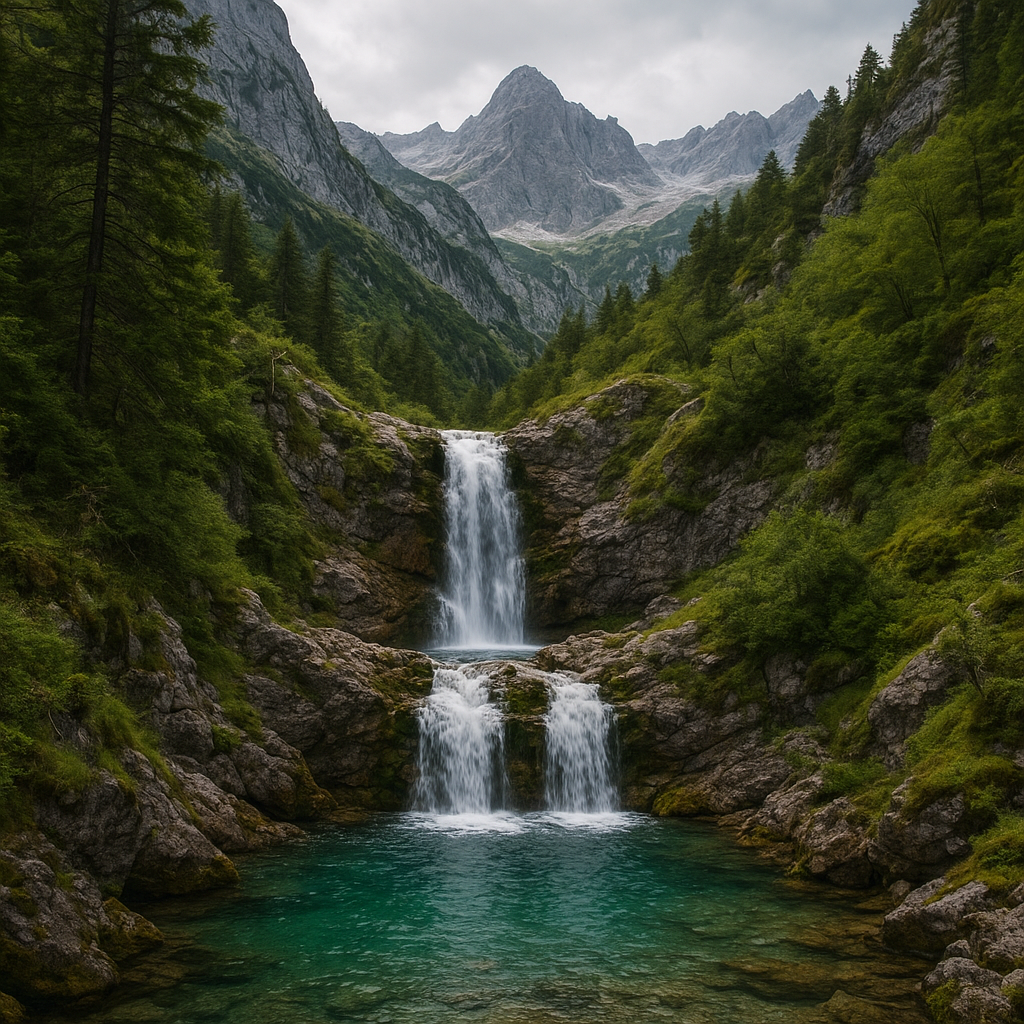
Alpine beauty, with its pristine landscapes and unique flora, has long been a source of inspiration for luxury skincare and wellness products. As the world becomes increasingly aware of environmental issues, the alpine beauty industry faces the challenge of balancing luxury with sustainability. This article explores the future of alpine beauty, focusing on how brands can maintain their high standards while adopting eco-friendly practices.
The Allure of Alpine Beauty
The allure of alpine beauty lies in its purity and the unique properties of its natural ingredients. The high altitudes, clean air, and unpolluted environments of alpine regions contribute to the growth of plants and herbs with exceptional qualities. These ingredients are often rich in antioxidants, vitamins, and minerals, making them highly sought after in the beauty industry.
Brands like La Prairie, Valmont, and Susanne Kaufmann have built their reputations on harnessing the power of alpine ingredients. These companies offer products that promise to rejuvenate, hydrate, and protect the skin, all while providing a luxurious experience. However, the extraction and use of these natural resources must be managed responsibly to ensure their sustainability for future generations.
Unique Alpine Ingredients
Some of the most popular alpine ingredients include edelweiss, arnica, and alpine rose. Edelweiss, known for its resilience in harsh conditions, is prized for its anti-aging and anti-inflammatory properties. Arnica is renowned for its ability to reduce swelling and bruising, making it a staple in many skincare formulations. Alpine rose, with its high levels of antioxidants, helps protect the skin from environmental stressors.
These ingredients are often harvested from remote, untouched areas, which adds to their exclusivity and appeal. However, this also raises concerns about overharvesting and the impact on local ecosystems. Sustainable sourcing practices are essential to preserve these natural treasures and maintain the integrity of alpine beauty products.
Sustainability in Alpine Beauty
As consumers become more environmentally conscious, the demand for sustainable beauty products is on the rise. Alpine beauty brands are responding by adopting eco-friendly practices and transparent supply chains. This shift not only helps protect the environment but also builds trust and loyalty among consumers.
Eco-Friendly Packaging
One of the most significant changes in the industry is the move towards eco-friendly packaging. Many alpine beauty brands are now using recyclable, biodegradable, or reusable materials for their product packaging. This reduces waste and minimizes the environmental footprint of their products.
For example, Susanne Kaufmann has introduced refillable packaging for some of their best-selling products. This initiative not only reduces plastic waste but also encourages customers to make more sustainable choices. Similarly, La Prairie has committed to using more sustainable materials in their packaging and reducing their overall environmental impact.
Ethical Sourcing and Fair Trade
Ethical sourcing and fair trade practices are also becoming more prevalent in the alpine beauty industry. Brands are working closely with local communities to ensure that the harvesting of alpine ingredients is done sustainably and ethically. This not only helps protect the environment but also supports the livelihoods of those who depend on these natural resources.
Valmont, for instance, sources their ingredients from their own organic farm in the Swiss Alps. This allows them to maintain strict control over the quality and sustainability of their products. By investing in local communities and promoting fair trade practices, alpine beauty brands can create a positive impact on both the environment and society.
Innovations in Alpine Beauty
Innovation is key to the future of alpine beauty. Brands are continually researching and developing new ways to harness the power of alpine ingredients while minimizing their environmental impact. This includes exploring alternative methods of cultivation, such as vertical farming and hydroponics, which can reduce the strain on natural resources.
Biotechnology and Alpine Ingredients
Biotechnology is playing an increasingly important role in the development of sustainable alpine beauty products. By using advanced techniques, scientists can replicate the beneficial properties of alpine ingredients in a lab setting. This not only reduces the need for wild harvesting but also ensures a consistent and reliable supply of high-quality ingredients.
For example, Mibelle Biochemistry has developed a range of active ingredients derived from alpine plants using biotechnology. Their PhytoCellTec™ technology allows for the cultivation of plant stem cells, which can be used in skincare formulations to promote cell regeneration and protect against environmental damage. This innovative approach combines the best of nature and science to create sustainable and effective beauty products.
Water Conservation and Energy Efficiency
Water conservation and energy efficiency are also critical considerations for the future of alpine beauty. Many brands are implementing measures to reduce their water usage and carbon footprint. This includes using renewable energy sources, optimizing production processes, and investing in water-saving technologies.
For instance, Weleda, a pioneer in natural and organic cosmetics, has made significant strides in reducing their environmental impact. They have implemented water-saving measures in their production facilities and use renewable energy sources to power their operations. By prioritizing sustainability, Weleda sets an example for other alpine beauty brands to follow.
The Role of Consumers
Consumers play a vital role in shaping the future of alpine beauty. By making informed choices and supporting brands that prioritize sustainability, they can drive positive change in the industry. This includes looking for certifications such as Ecocert, COSMOS, and Fair Trade, which indicate that a brand meets high standards of environmental and social responsibility.
Educating and Empowering Consumers
Education is key to empowering consumers to make sustainable choices. Brands can play a significant role in this by providing transparent information about their sourcing practices, ingredient origins, and environmental impact. This helps build trust and encourages consumers to support brands that align with their values.
Many alpine beauty brands are already taking steps to educate their customers. For example, Susanne Kaufmann offers detailed information about their ingredients and sustainability initiatives on their website. By being transparent and open about their practices, they empower consumers to make informed decisions and contribute to a more sustainable future.
Supporting Local and Small-Scale Producers
Supporting local and small-scale producers is another way consumers can promote sustainability in the alpine beauty industry. By choosing products from brands that work with local communities and prioritize fair trade practices, consumers can help ensure that the benefits of the industry are shared more equitably.
For example, the brand Pure Altitude collaborates with local farmers and artisans in the French Alps to source their ingredients. This not only supports the local economy but also helps preserve traditional knowledge and practices. By choosing products from such brands, consumers can make a positive impact on both the environment and society.
Conclusion
The future of alpine beauty lies in the delicate balance between luxury and sustainability. By adopting eco-friendly practices, investing in innovation, and educating consumers, the industry can continue to thrive while protecting the pristine environments that inspire it. As more brands and consumers embrace sustainability, the alpine beauty industry can set a new standard for luxury that is both ethical and environmentally responsible.
Ultimately, the success of this transition depends on the collective efforts of brands, consumers, and communities. By working together, we can ensure that the beauty of the Alps remains a source of inspiration and well-being for generations to come.

